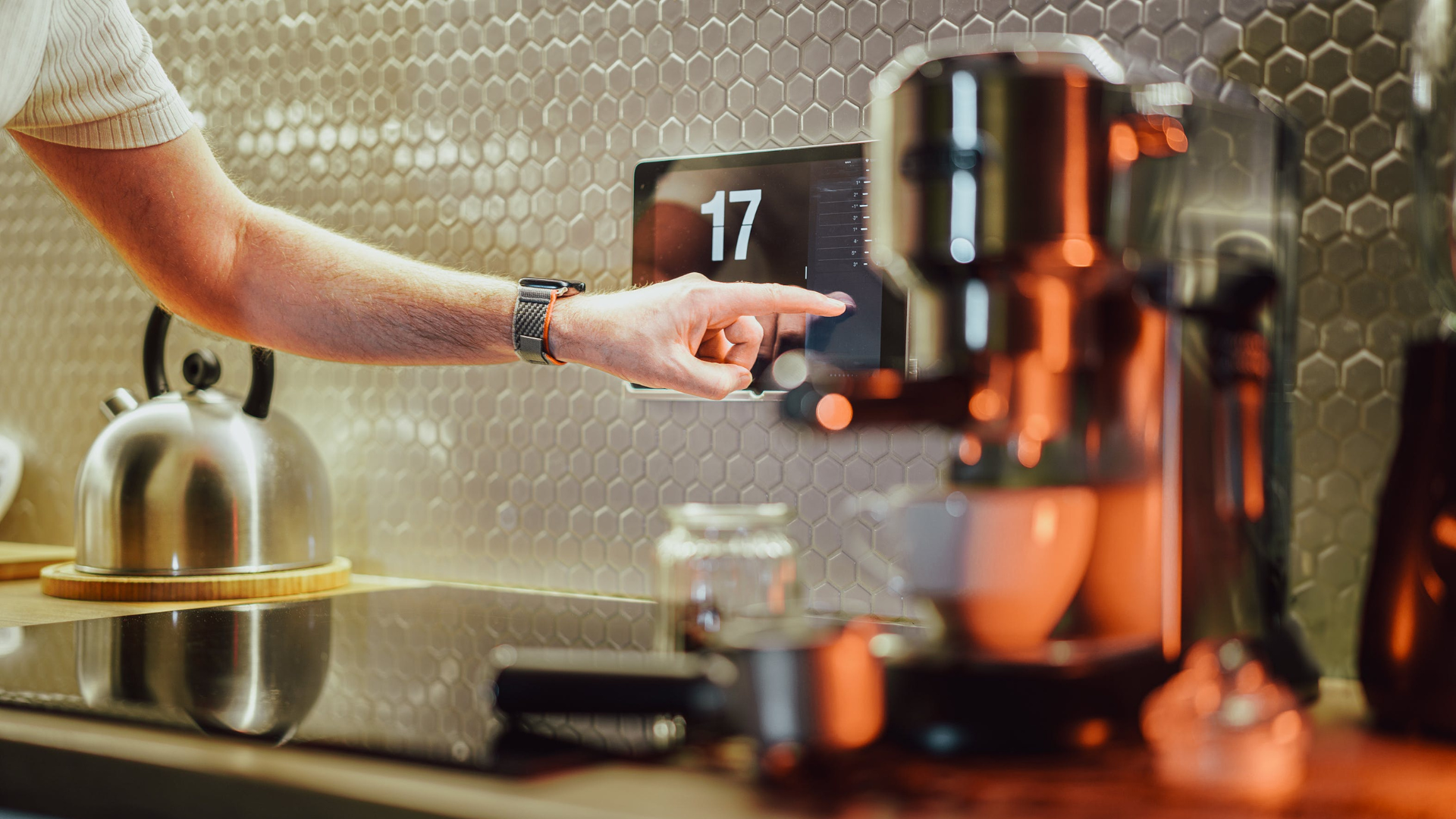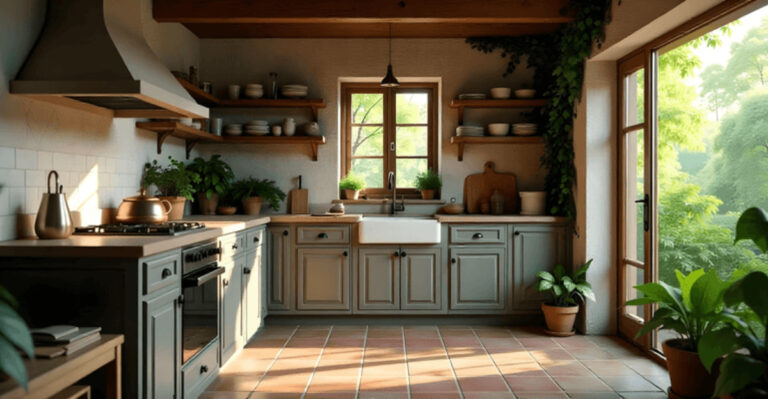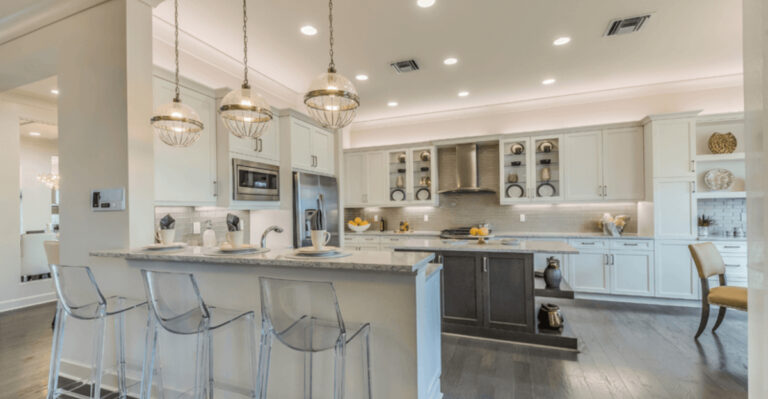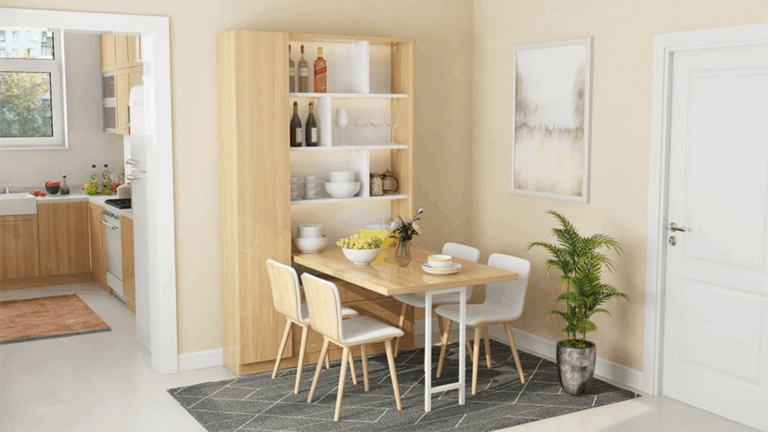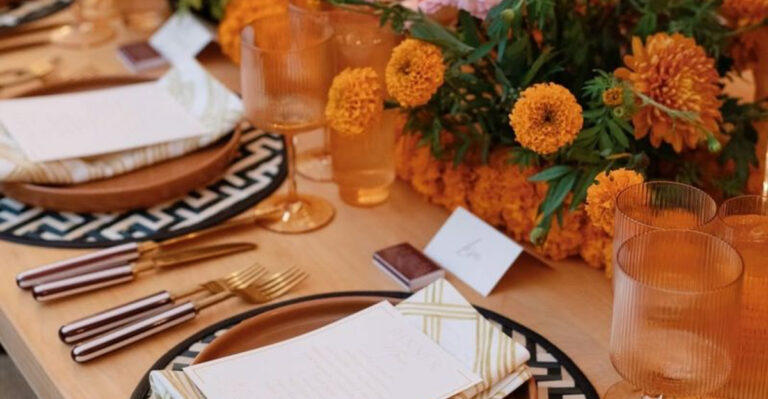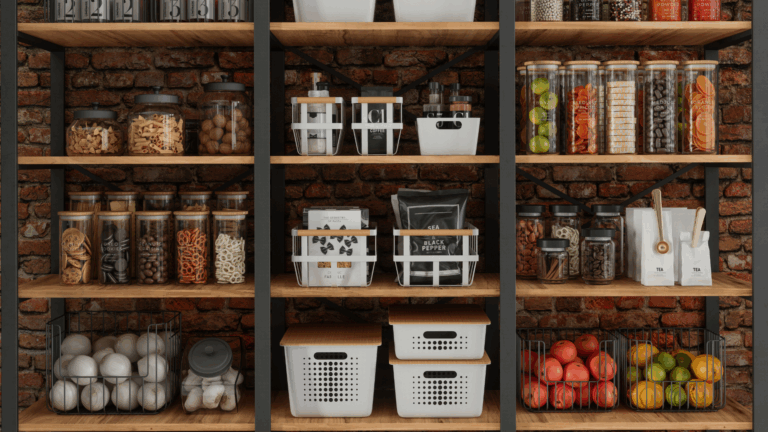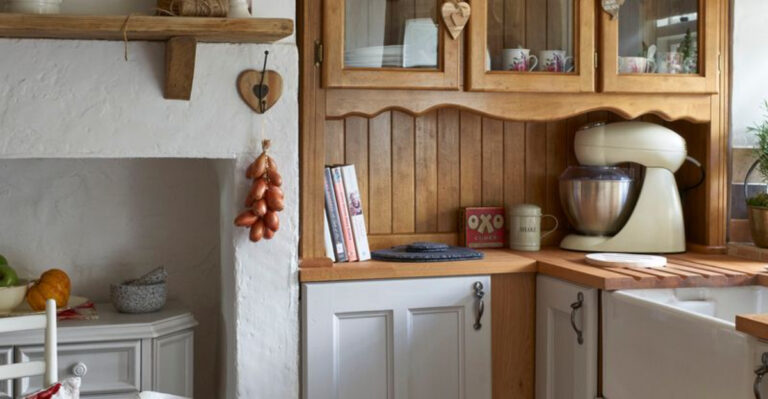10 Kitchen Trends That Will Definitely Last By 2030 (Plus 10 Trends That Will Absolutely Peak)
Kitchen styles have always come and gone, just think about avocado appliances or the all-stainless-steel craze. Looking ahead to 2030, it’s clear that some choices will age well, while others might feel outdated before we know it.
I’ve found myself wondering what makes certain design elements feel timeless, while others end up looking like a trend we all followed a little too blindly.
It’s easy to get caught up in what’s popular right now, but if you’re thinking long-term, it helps to know what’s likely to stick around, and what might eventually have you shaking your head.
1. Sustainable Materials
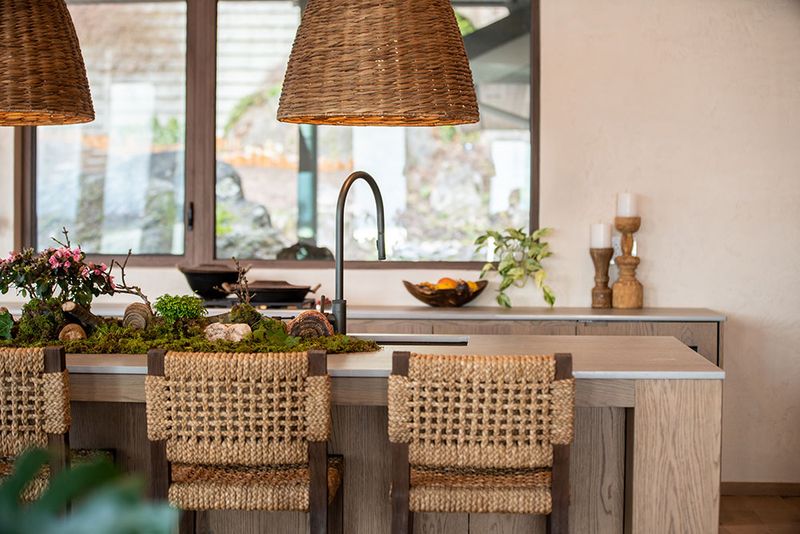
Bamboo cabinets and recycled glass countertops aren’t just a passing fad. They’re becoming the new normal as homeowners grow increasingly aware of their environmental footprint.
Materials that come from renewable sources or repurposed goods reduce waste while still looking fantastic. There’s something satisfying about cooking in a space that’s as kind to the planet as your homemade veggie soup is to your body.
Plus, these eco-friendly options often bring unique textures and patterns you won’t find in conventional materials.
2. Smart Appliances
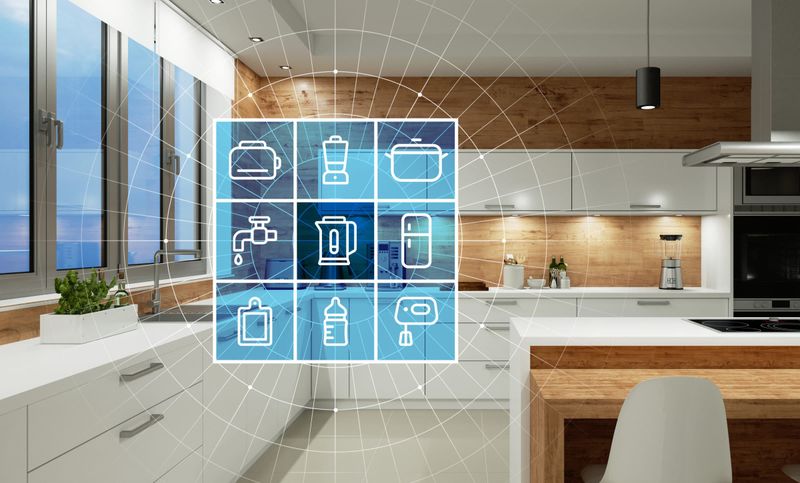
Remember when microwaves were considered high-tech? Now we have refrigerators that tell us when the milk is about to expire and ovens we can preheat from our phones.
These connected gadgets save time, energy, and sometimes even money by optimizing how we use our kitchens. Smart technology is quickly moving from luxury to necessity.
Families especially love features like voice-controlled faucets when their hands are covered in cookie dough or apps that remind them to grab eggs while grocery shopping.
3. Multifunctional Islands
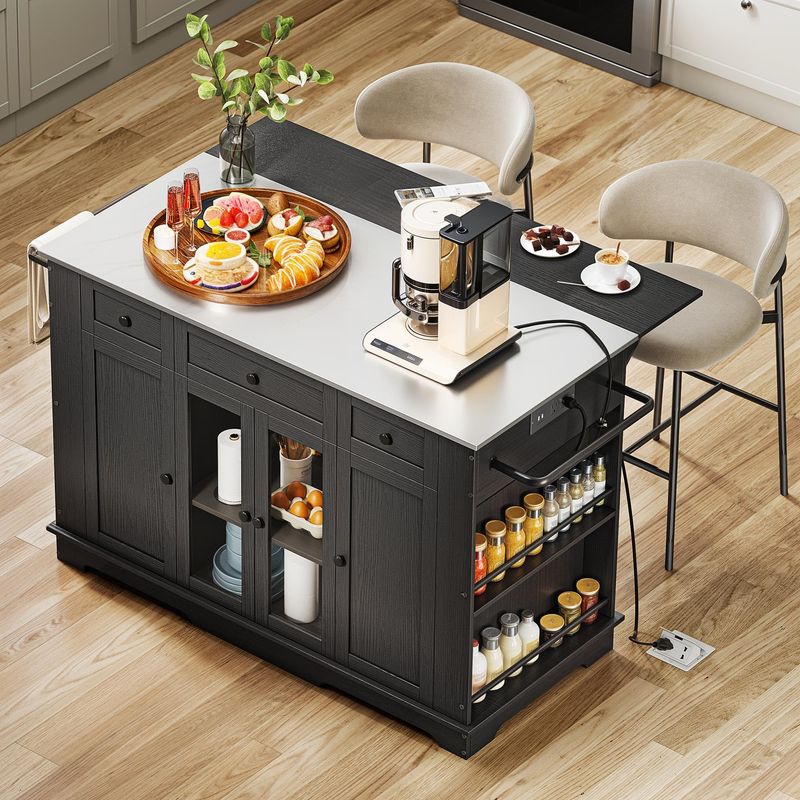
If kitchen islands were ships, they’d be massive aircraft carriers by now! Gone are the days when an island was just extra counter space.
Today’s versions pack in seating, storage, cooking surfaces, and sometimes even sinks or dishwashers. How cool is it that one piece of furniture can serve so many purposes?
For busy households where homework happens alongside dinner prep, these command centers make perfect sense. Some newer models even include adjustable heights for different activities or family members.
4. Open Shelving

Marie Kondo would approve of this trend! Open shelving forces us to be intentional about what we own and display. When everything is visible, you naturally keep only what you truly need and love.
Though some folks worry about dust, the accessibility and airy feel these shelves provide outweigh the extra cleaning.
Arranged thoughtfully with everyday dishes, cookbooks, or plants, they add personality to kitchens that closed cabinets simply can’t match.
5. Touchless Faucets
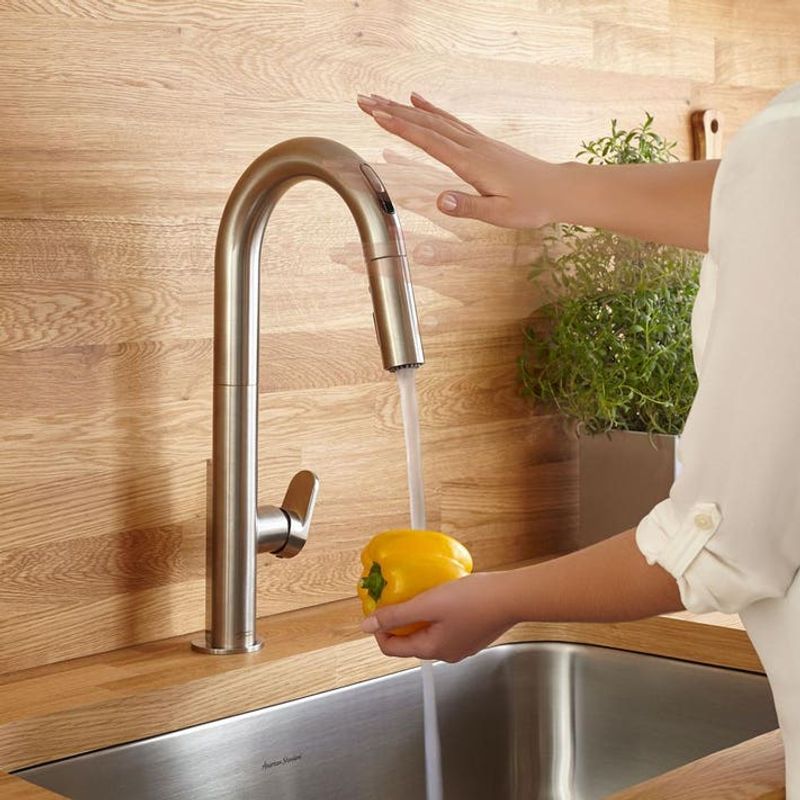
Waving your hand like a kitchen magician to start the water flow isn’t just cool, it’s practical. Since the pandemic, we’ve all become more conscious about spreading germs, making touchless faucets incredibly popular.
Imagine cooking with chicken and not having to touch anything with your messy hands. These faucets also help conserve water since they shut off automatically.
While early models sometimes had frustrating sensor issues, newer versions work reliably and have become more affordable.
6. Hidden Appliances
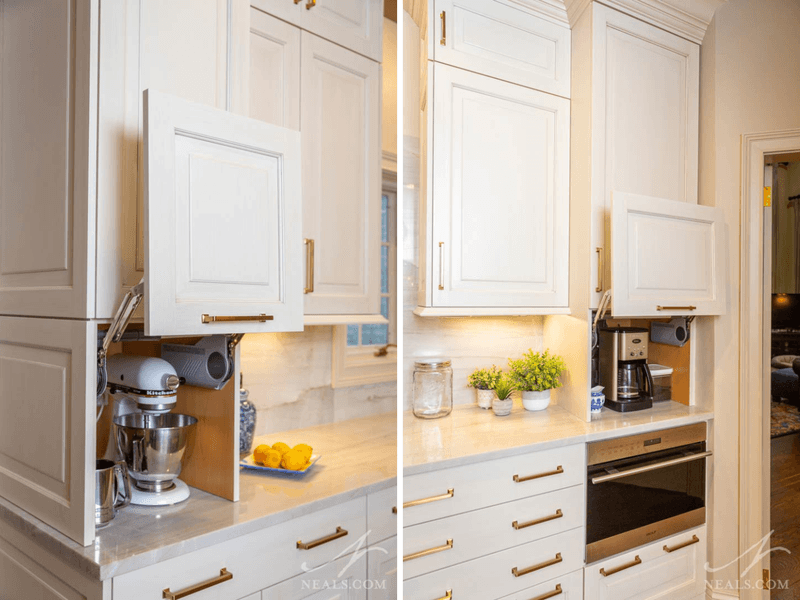
Guess what’s hiding behind those cabinet panels? Everything from refrigerators to dishwashers! This seamless look creates visual calm by eliminating the cluttered appearance of multiple appliance surfaces.
Without the visual disruption of stainless steel or black appliance fronts, kitchens feel more like thoughtfully designed living spaces.
Celebrity chefs might love showing off their professional-grade equipment, but for most homeowners, the clean aesthetic of hidden appliances provides a more relaxing cooking environment.
7. Natural Stone Surfaces
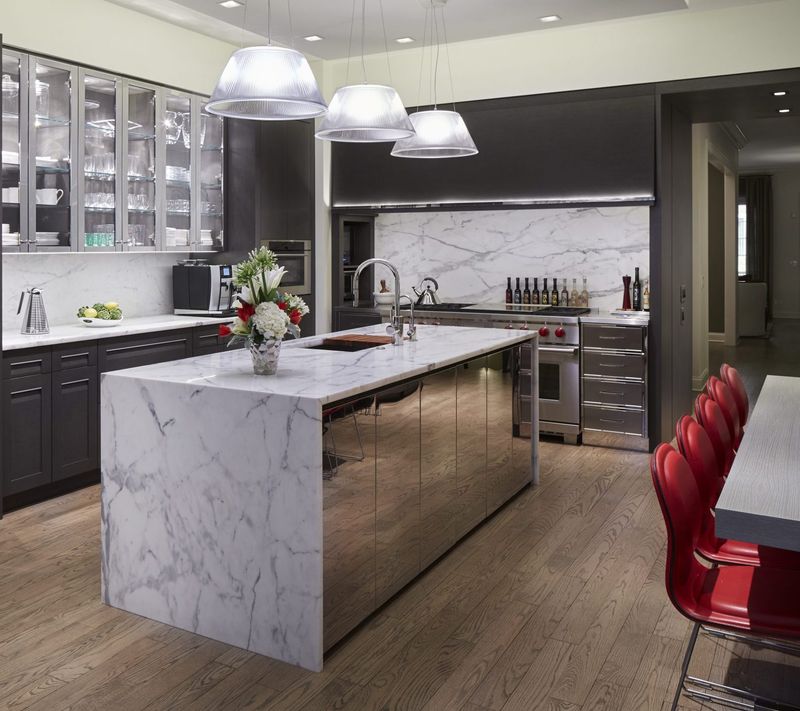
Granite might not be the automatic choice it once was, but natural stone in general isn’t going anywhere. Quartzite, marble, and soapstone each bring unique character that manufactured surfaces struggle to replicate.
Nothing quite matches the depth and variation found in stone formed over thousands of years. While quartz composites offer practical benefits, the authentic beauty of natural stone continues to appeal to those who want their kitchens to feel grounded and organic.
8. Mixed Metals
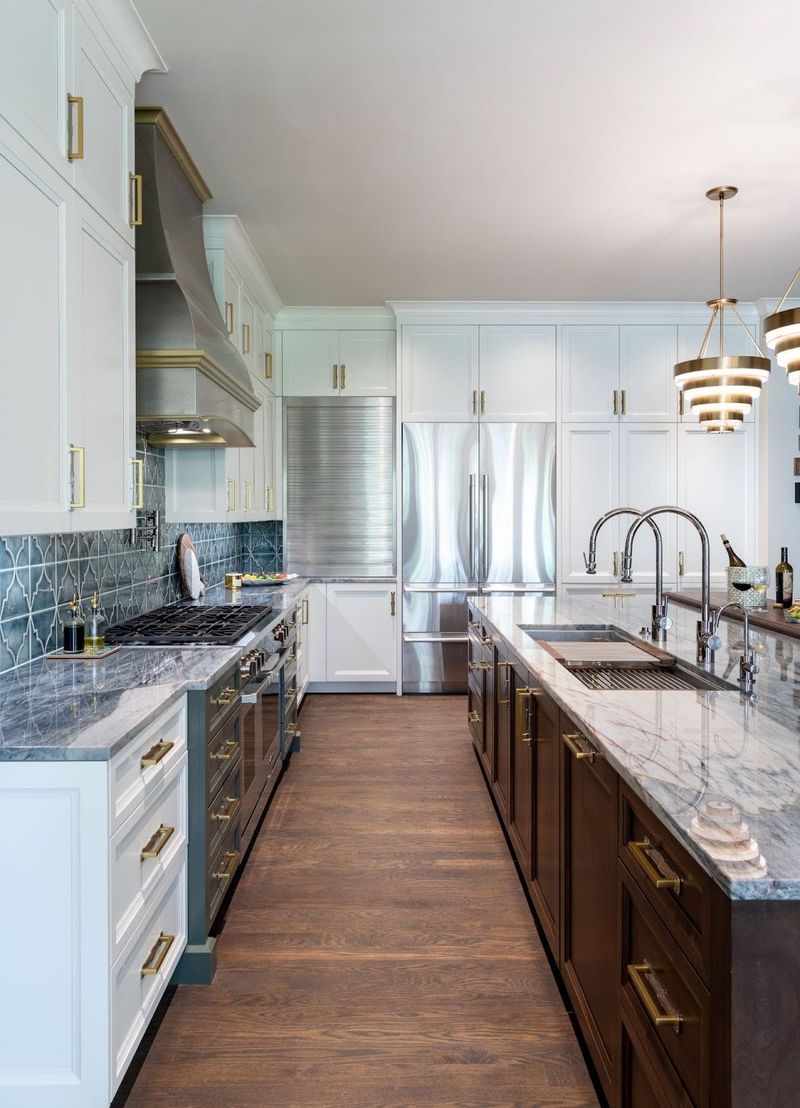
Breaking the matchy-matchy rules feels liberating! Combining brass cabinet pulls with stainless appliances and matte black faucets creates visual interest that single-metal kitchens lack.
Sometimes rules are meant to be broken, especially when the result looks this good. The key is choosing metals that complement each other rather than clash.
When done right, this approach adds warmth and dimension that makes a kitchen feel thoughtfully curated instead of straight from a showroom catalog.
9. Dedicated Food Storage Solutions
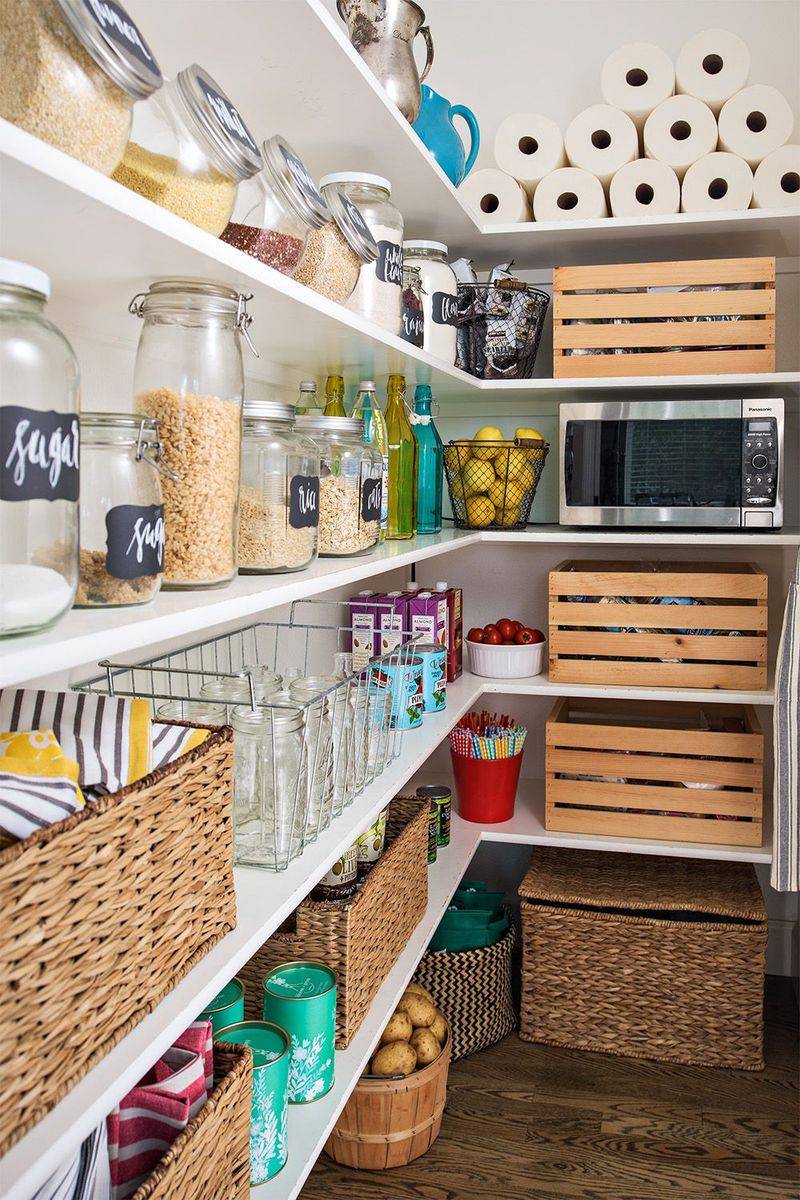
Walk-in pantries and specialized storage zones aren’t just for professional chefs anymore. After pandemic-era stockpiling taught us the value of organized food storage, these features became must-haves rather than luxuries.
Custom drawer dividers for spices, pull-out shelving for canned goods, and designated baking stations make cooking more efficient and enjoyable.
Families particularly appreciate being able to see and access everything at once, reducing food waste and making meal planning easier.
10. Indoor Herb Gardens
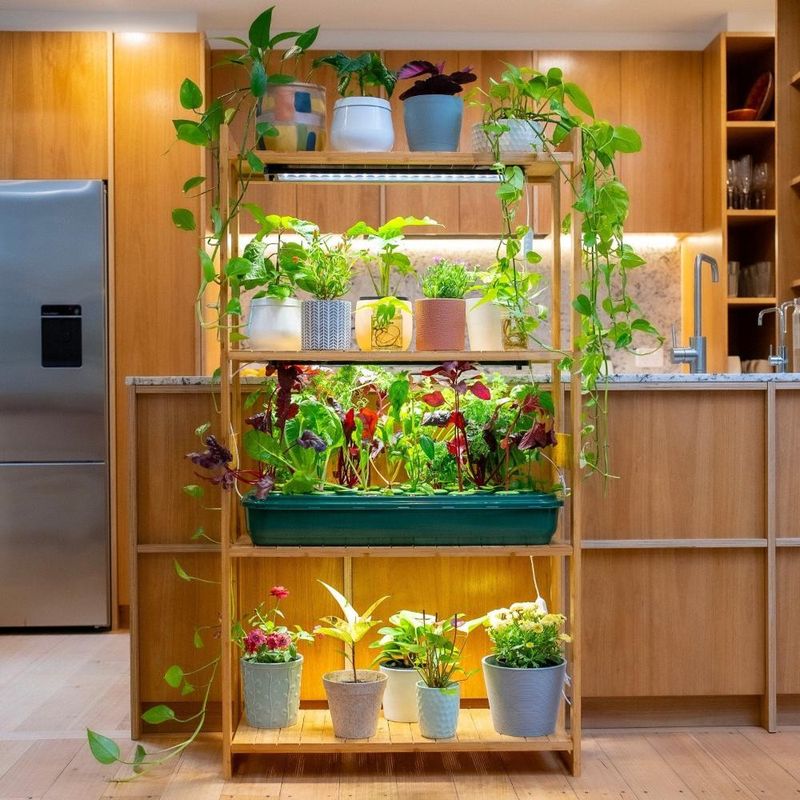
Fresh basil for your pasta sauce without a trip to the store? Yes please! Built-in spaces for growing herbs and microgreens connect us to our food while adding life and color to kitchens.
Whether it’s a simple windowsill setup or a high-tech hydroponic system with grow lights, indoor gardens provide both practical benefits and aesthetic appeal.
Many new kitchen designs now include dedicated growing stations with proper drainage and lighting, showing this trend has deep roots.
11. Moody, Dark Color Palettes
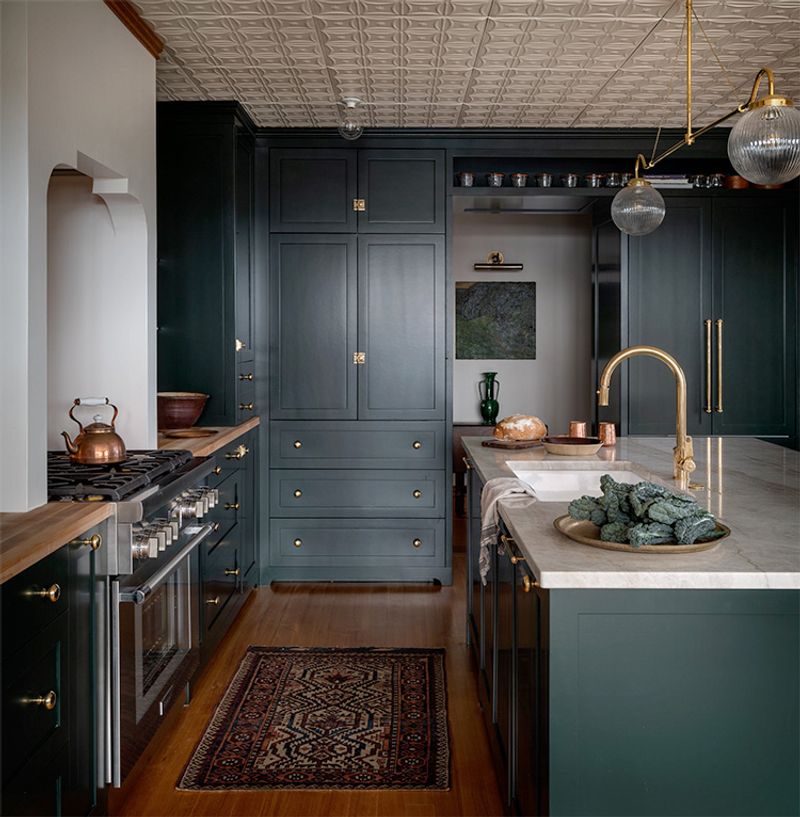
These dramatic hues create cozy, intimate spaces that feel both luxurious and comforting. Remember when everyone wanted all-white kitchens? Those days are fading fast.
Dark cabinets absorb light rather than reflect it, making your kitchen feel like a high-end restaurant rather than a sterile laboratory. They also hide fingerprints and food splatters better than lighter colors, making them practical for busy families.
By 2030, expect to see these rich tones paired with warm metallic accents and natural materials for kitchens that feel sophisticated yet welcoming.
12. Integrated Ambient Lighting
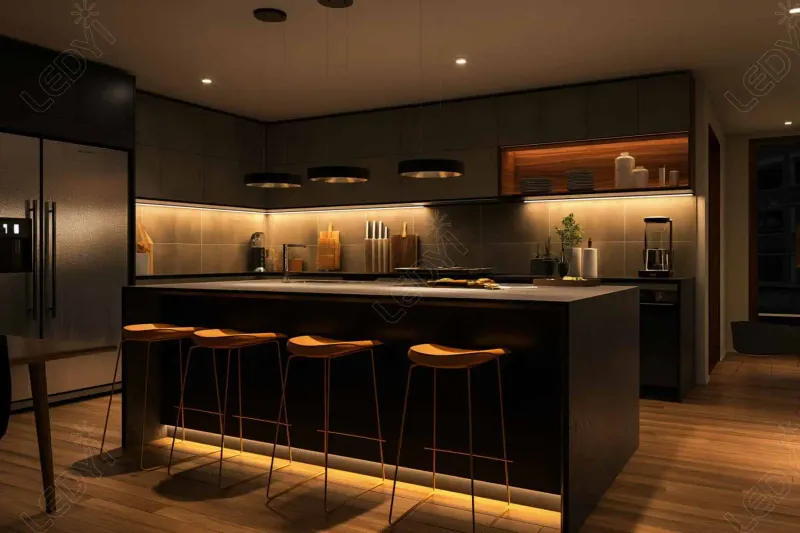
Soft, layered lighting is revolutionizing how we experience our cooking spaces. Under-cabinet LEDs, toe-kick illumination, and in-drawer lighting systems create a warm glow that transforms kitchens from merely functional to genuinely atmospheric.
Smart lighting systems that adjust based on time of day are becoming standard features. Morning coffee prep gets bright, energizing light, while evening meal prep benefits from softer, more relaxing illumination.
The best part? Energy-efficient LEDs mean these systems use minimal electricity while lasting for decades, making them both environmentally and economically sustainable for the long haul.
13. Statement Range Hoods
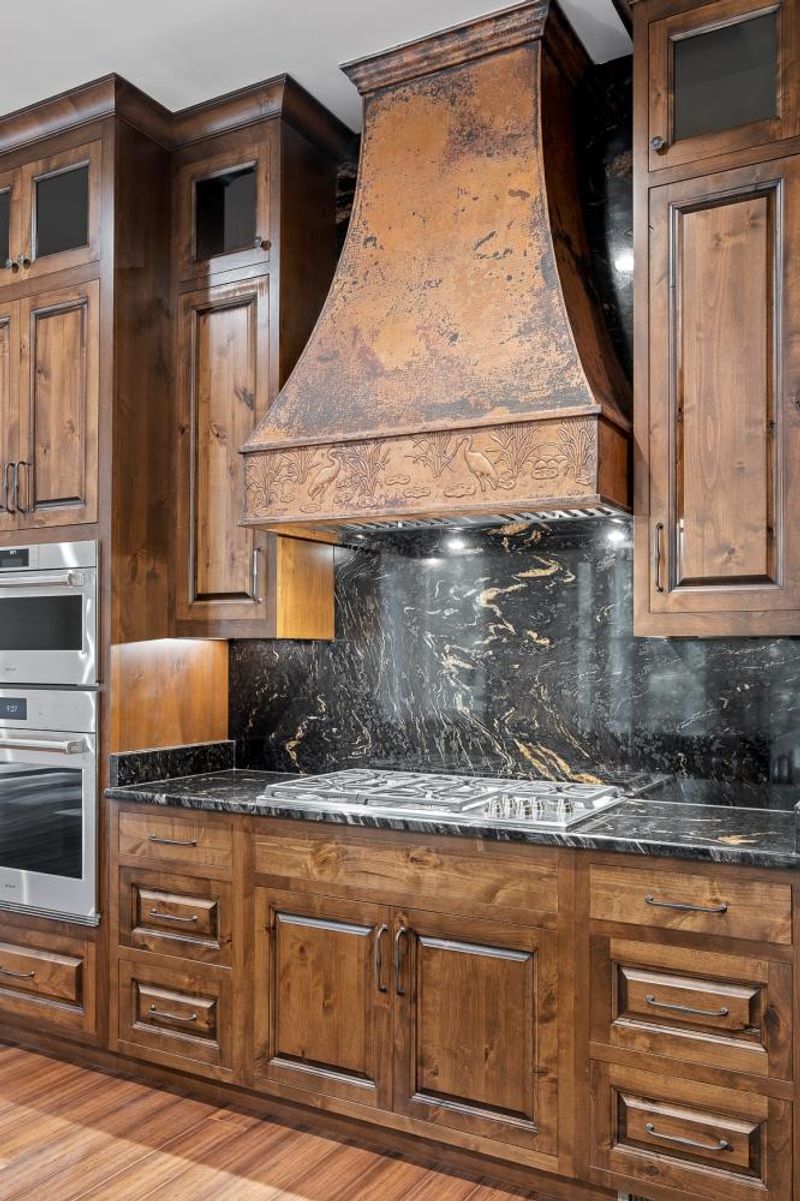
Hammered copper, sleek black metal, and even custom-built wooden enclosures are transforming these once-utilitarian items into stunning focal points.
Some homeowners are even commissioning custom artwork or applying specialty finishes to create truly one-of-a-kind pieces.
This trend celebrates the hearth as the heart of the home, acknowledging cooking as both necessity and art form worthy of beautiful framing.
14. Textured Cabinetry
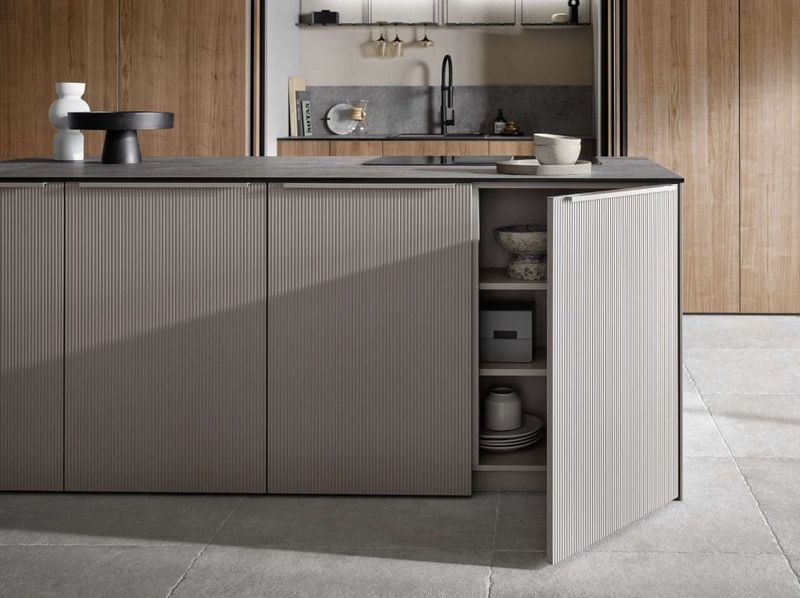
Flat cabinet fronts? How boring! The tactile revolution is here with fluted panels, reeded glass, and ribbed wood details adding depth and dimension to kitchen storage.
Vertical grooves hide fingerprints and minor scratches better than flat surfaces, extending the life of your cabinetry. Certain textures even make cabinets easier to grip and open, a subtle universal design feature.
Manufacturers are developing innovative techniques to create these textures affordably, making them accessible across price points from budget-friendly kitchens to high-end custom installations.
15. Butler’s Pantries and Prep Kitchens
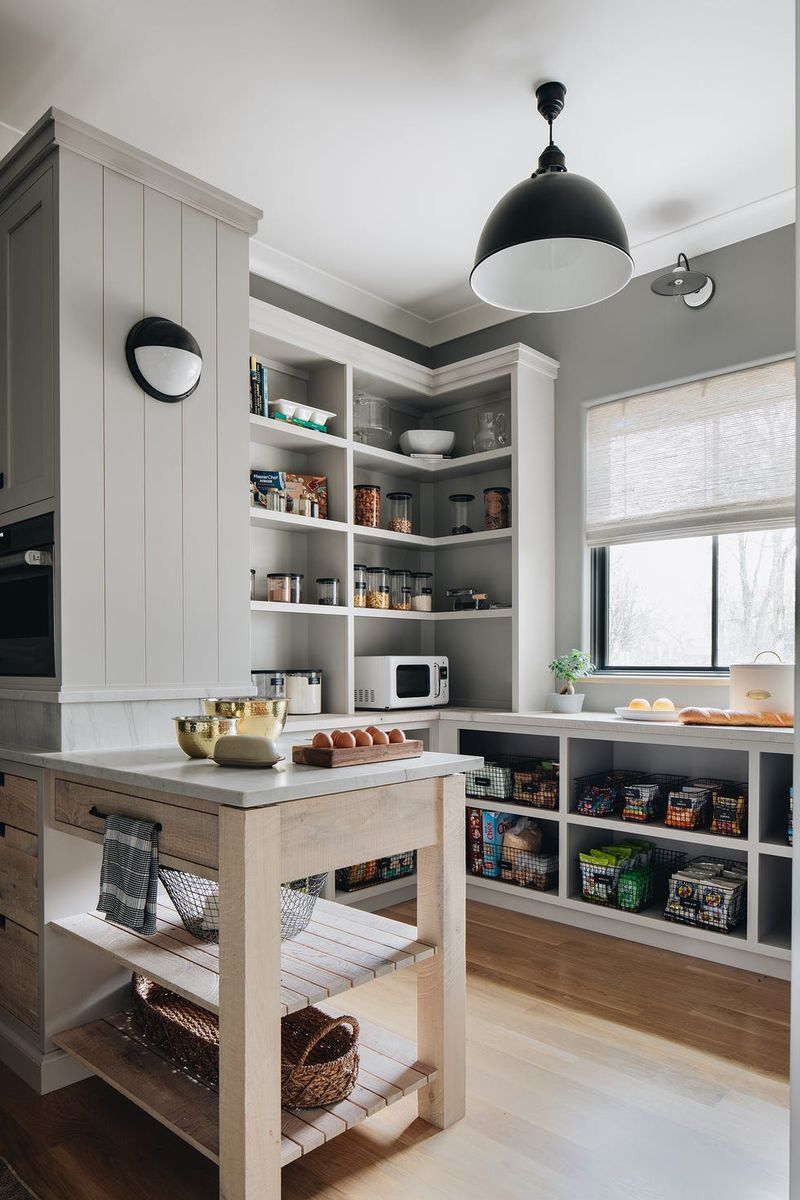
Originally popular in grand Victorian homes, they’re being reimagined for modern living. These secondary spaces house messy coffee stations, additional refrigeration, and prep areas for entertaining.
The real magic happens during parties – dirty dishes disappear from sight while the main kitchen remains pristine for guests.
Even in modest homes, clever designers are carving out mini butler’s pantries in former closets or hallways, proving you don’t need a mansion to embrace this supremely practical trend that beautifully balances aesthetics with functionality.
16. Colorful Backsplashes
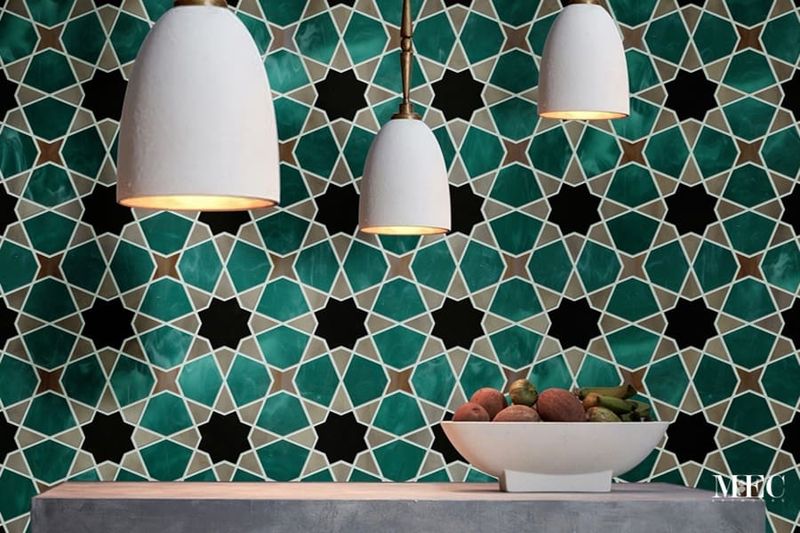
Zellige tiles with their handcrafted imperfections, bold geometric patterns, and artistic mosaic installations are turning kitchen backsplashes into genuine works of art.
Energizing yellows and oranges near breakfast nooks, calming blues behind sinks, and appetite-stimulating reds near cooking zones create different moods throughout the kitchen.
Unlike permanent fixtures, backsplashes offer relatively affordable opportunities to express personal style. Even rental property owners are investing in removable options like peel-and-stick tiles that deliver visual impact without commitment.
17. Built-in Coffee & Beverage Stations
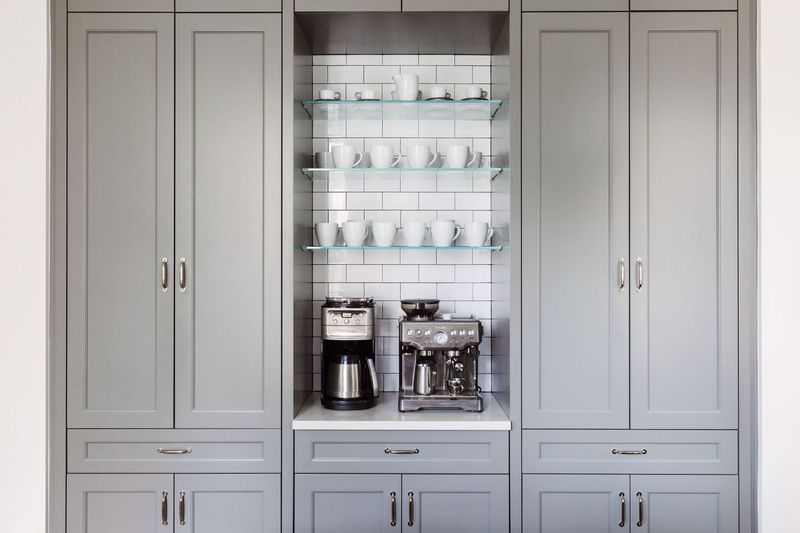
These stations often include specialized storage for mugs, glasses, and accessories. Smart technology integration takes these areas to the next level.
App-controlled coffee makers that have your perfect brew ready when you wake up, temperature-controlled wine storage, and even automated cocktail dispensers bring barista and bartender quality beverages home.
Families especially appreciate these zones as they allow multiple people to prepare different drinks without crowding the main kitchen workspace – no more traffic jams around the refrigerator during busy mornings!
18. Furniture-Style Cabinetry
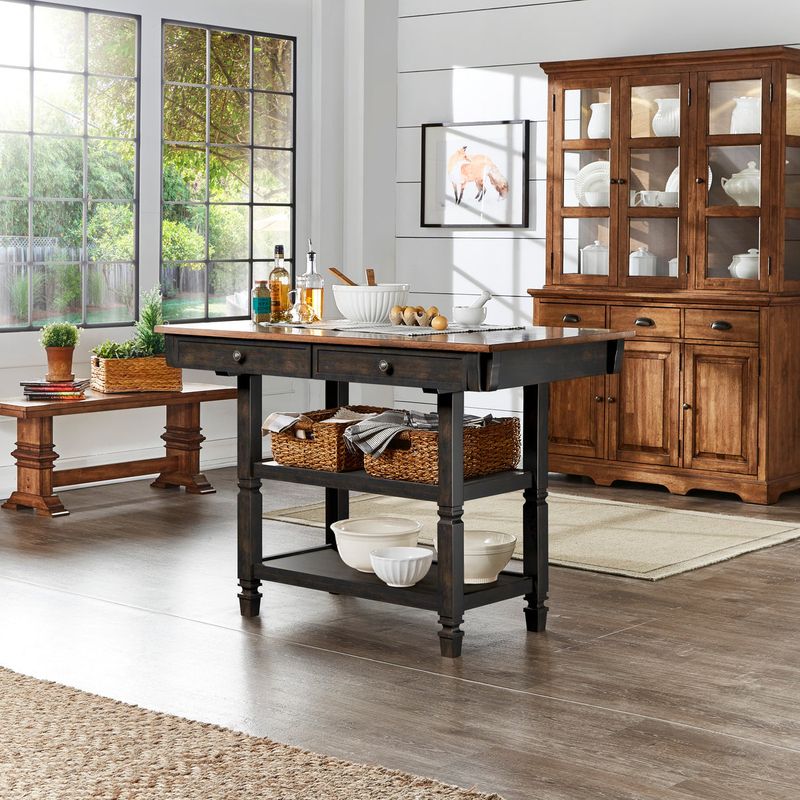
Hutch-inspired dish storage, armoire-style pantries, and island bases that mimic antique tables bring character and warmth to formerly utilitarian spaces.
These pieces often feature decorative legs, applied moldings, and hardware that would look at home on fine furniture. Some homeowners are even incorporating actual antiques into their kitchens, repurposing sideboards as islands or vintage display cabinets for dish storage.
The appeal lies in how these elements blur the lines between kitchen and living spaces, creating cohesive flow in open-concept homes while adding personality that mass-produced cabinetry simply cannot match.
19. Rounded Edges and Organic Shapes
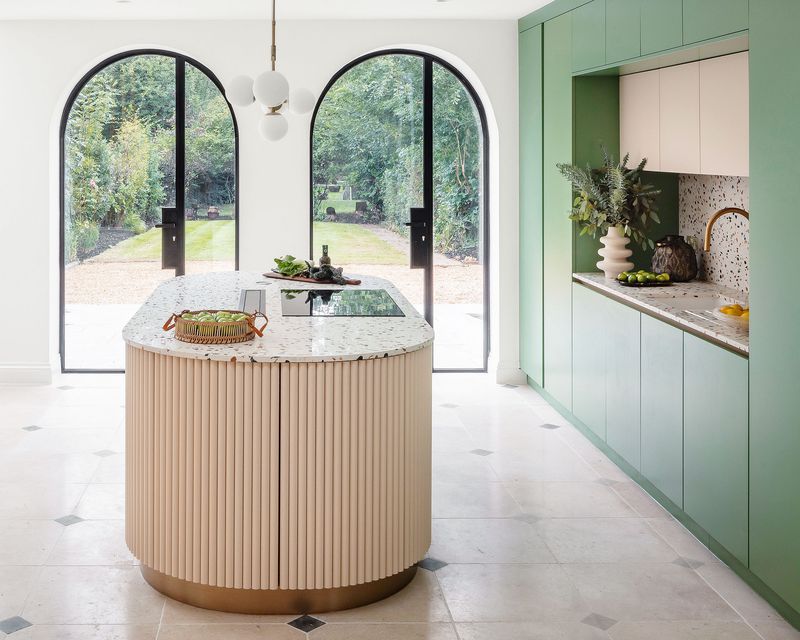
This shift toward organic shapes creates kitchens that feel naturally welcoming rather than rigid and institutional. Rounded islands with waterfall edges invite people to gather around comfortably.
Arched doorways and niches echo architectural details from earlier eras while feeling thoroughly modern in application. Even appliances are getting in on the action with curved fronts and rounded handles.
Beyond aesthetics, these softer edges offer practical benefits for households with children or elderly members by reducing injury risks from accidental bumps – form and function in perfect harmony!
20. Vintage and Retro Accents
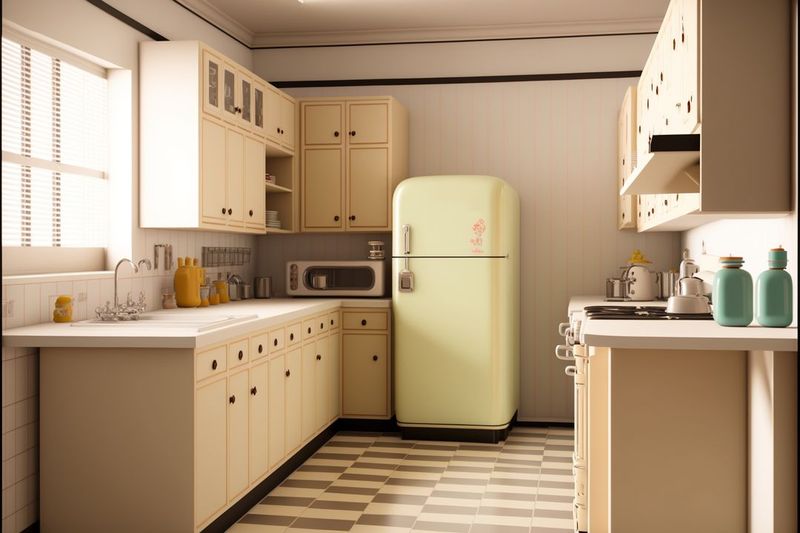
Think pastel refrigerators with rounded edges, checkerboard floors, and atomic starburst clocks that channel mid-century charm. This trend isn’t about creating time capsules though.
Modern interpretations blend old-school aesthetics with contemporary function – that mint green fridge has smart technology inside, while those penny tiles are made from recycled materials with easy-clean grout.
Psychologists suggest our attraction to vintage elements stems from seeking comfort during uncertain times. These familiar designs evoke simpler eras, creating emotional connections while still delivering the performance modern life demands.

